If you’re a farmer or gardener, you understand the critical role that water plays in nurturing your crops and plants. Ensuring a steady and efficient supply of water is essential for a thriving agricultural or garden venture. Two popular irrigation methods, basin and drip irrigation, are frequently used to meet this need. In this article, we’ll explore the differences between these two irrigation systems and help you decide which one is right for your farm or garden.
Read, Also >>>>>> A Guide to Mastering Pivot Irrigation for Efficient Farming and How Pivot Irrigation is Transforming Agriculture
Basin Irrigation
Basin irrigation, also known as flood irrigation, is a time-tested method of providing water to crops or plants by creating shallow depressions or basins around them and flooding these basins with water. It’s a straightforward and cost-effective technique that has been used for centuries, particularly in areas with ample water availability. In this section, we’ll delve deeper into the details of basin irrigation.

How Basin Irrigation Works
The process of basin irrigation involves several steps:
- Basin Creation: The first step is to create shallow, flat-bottomed basins around the base of each plant or row of crops. The size and shape of the basins can vary depending on the type of plants being irrigated and the specific needs of the farm or garden.
- Water Delivery: Water is delivered to the basins either manually or through gravity-fed canals or pipes. In traditional basin irrigation, farmers often use shovels or tractors to guide the water flow into the basins.
- Filling and Soaking: The basins are filled with water until the soil is thoroughly saturated. This allows the water to penetrate the root zone of the plants, providing them with the necessary moisture for growth.
- Drainage: After a sufficient amount of time, the excess water is allowed to drain from the basins. This prevents waterlogging and ensures that the plants do not drown.
Pros of Basin Irrigation
- Low Cost: Basin irrigation is one of the most cost-effective methods of irrigation. It requires minimal investment in equipment and infrastructure, making it accessible to small-scale farmers and gardeners.
- Suitable for Various Soil Types: It works well in clayey soils that retain water. The even distribution of water across the field can benefit crops with different soil moisture requirements.
- Low Maintenance: Basin irrigation systems are relatively simple and have fewer components that can malfunction, resulting in lower maintenance costs.
Cons of Basin Irrigation
- Water Wastage: One of the significant drawbacks of basin irrigation is water wastage. Excess water may flow away from the basins or evaporate, leading to inefficient use of water resources.
- Labor-Intensive: Creating basins and manually guiding water flow can be labor-intensive, especially on large farms. This can increase operational costs.
- Uneven Distribution: Achieving uniform water distribution across the entire field can be challenging. Some areas may receive more water than needed, leading to overwatering, while others may receive too little, resulting in underwatering.
- Limited Precision: Basin irrigation lacks precision in delivering water to specific plant locations, which can be a disadvantage when compared to more modern irrigation methods like drip irrigation.
Basin irrigation is a time-honored technique that has been used successfully for centuries to water crops and plants. Its simplicity and affordability make it accessible to many farmers and gardeners, particularly in regions with abundant water resources.
However, it’s essential to weigh the advantages and disadvantages of basin irrigation carefully. While it can be an effective method for some agricultural and gardening scenarios, it may not be the most water-efficient choice, and it can be labor-intensive.
Ultimately, the suitability of basin irrigation depends on factors such as the type of crops or plants being cultivated, the local climate, the availability of labor, and the budget. In some cases, combining basin irrigation with more precise methods like drip irrigation may offer the best of both worlds, ensuring efficient water use while minimizing labor and costs.
Read, Also >>>>>> A Guide to Mastering Pivot Irrigation for Efficient Farming and How Pivot Irrigation is Transforming Agriculture
Drip Irrigation
Drip irrigation, also known as trickle irrigation, is a modern and precise method of delivering water to crops or plants directly at their root zone. Unlike traditional methods like basin irrigation, drip irrigation focuses on conserving water and optimizing its use. In this section, we’ll delve into the details of drip irrigation and explore how it works and its advantages and disadvantages.
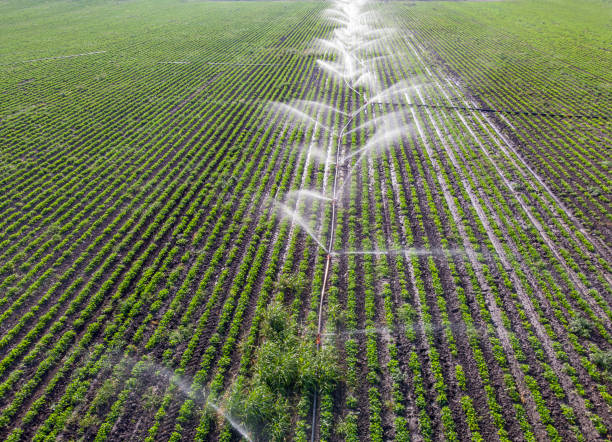
How Drip Irrigation Works
Drip irrigation involves a network of tubes, pipes, and emitters that deliver water precisely to where it’s needed. Here’s a step-by-step breakdown of how drip irrigation functions:
- Main Water Supply: The irrigation system is connected to the main water supply, which can be a water source like a well, pump, or municipal water supply.
- Distribution Tubing: Water is transported from the main supply through a distribution tubing or pipeline. This tubing is typically made of materials like PVC or polyethylene and is laid out across the field or garden.
- Emitters: Emitters, also known as drippers or drip heads, are strategically placed along the distribution tubing. These emitters release water in controlled and measured quantities directly to the base of each plant.
- Filters and Pressure Regulators: Filters and pressure regulators are often included in the system to ensure that the water is clean and that the pressure is consistent. This prevents clogging of the emitters and ensures uniform water distribution.
- Timers and Controllers: Drip irrigation systems can be equipped with timers and controllers, allowing you to schedule when and how much water is delivered to your plants. Automation helps optimize watering schedules.
- Fertilizer Injection: Some drip irrigation systems have the capability to inject fertilizers or nutrients into the water stream, providing plants with essential nutrients along with water.
Pros of Drip Irrigation
- Water Efficiency: Drip irrigation is highly water-efficient. It delivers water directly to the root zone, minimizing water wastage due to evaporation, runoff, or overspray.
- Precise Nutrient Delivery: You can precisely control the delivery of nutrients to plants by mixing fertilizers with irrigation water. This promotes healthier growth and higher yields.
- Reduced Weed Growth: Since water is delivered directly to the plants, there’s less moisture available between rows, reducing the growth of weeds.
- Adaptable: Drip irrigation systems are adaptable and suitable for a wide range of crops, including vegetables, fruits, flowers, and even trees. They can be customized to meet the specific needs of different plant types.
- Automation: Drip systems can be automated, which is especially beneficial for large-scale farming. Automated scheduling ensures consistent and efficient watering without the need for constant manual intervention.
Cons of Drip Irrigation
- Initial Investment: Setting up a drip irrigation system can be costly due to the need for tubing, emitters, filters, pressure regulators, and pumps. However, this cost can often be offset by water savings in the long run.
- Maintenance: Drip systems require regular maintenance to prevent clogging of emitters and tubing. This includes cleaning filters and ensuring that all components are functioning correctly.
- Knowledge-Intensive: Proper design and maintenance of a drip irrigation system may require some knowledge and expertise, which can be a learning curve for beginners.
- Susceptible to Damage: Components of the system, such as tubing and emitters, can be vulnerable to damage from pests, rodents, or physical disturbances, requiring ongoing monitoring and repairs.
Drip irrigation is a precise and efficient method of providing water to plants, making it an excellent choice for many farmers and gardeners. While the initial setup cost and maintenance requirements may be higher than traditional methods like basin irrigation, the long-term benefits in terms of water savings, improved crop health, and reduced labor make it a compelling option.
The suitability of drip irrigation depends on factors such as the type of crops or plants, the availability of water, the budget, and the willingness to invest in automation and maintenance. For those looking to optimize water use and promote healthy plant growth, drip irrigation is a technology-driven solution that can lead to more productive and sustainable farming and gardening practices.
Factors to Consider
When deciding between basin irrigation and drip irrigation for your farm or garden, several crucial factors should guide your choice. Each irrigation method has its advantages and disadvantages, so understanding these factors will help you make an informed decision that aligns with your specific needs and circumstances. Here are the key factors to consider:
-
Crop or Plant Type:
- Different crops and plants have varying water requirements. Consider the specific needs of your crops. Drip irrigation is often preferred for vegetables, fruits, and ornamental plants, while basin irrigation may work well for larger trees or shrubs.
-
Water Source:
- Assess the source of your water. If you have limited access to water, drip irrigation’s efficiency in water use may be more appealing. Basin irrigation can be used if water availability is not a concern.
-
Budget:
- Your budget plays a significant role in the decision-making process. While drip irrigation systems require a higher initial investment due to equipment and technology, they can save on water costs in the long run. Consider your financial resources and long-term savings.
-
Size of Area:
- The size of your farm or garden matters. Drip irrigation can be more practical for smaller spaces, where precise water distribution is critical. Basin irrigation, with its lower setup costs, may be suitable for larger areas.
-
Labor Availability:
- Think about the availability of labor. Basin irrigation can be labor-intensive during setup and maintenance, especially if it involves manual labor. Drip systems are typically automated, requiring less ongoing effort.
-
Environmental Impact:
- Consider the environmental impact of your choice. Drip irrigation is generally more environmentally friendly due to its water efficiency and reduced risk of soil erosion. If environmental sustainability is a priority, this might influence your decision.
-
Local Climate:
- The local climate, including temperature and humidity, can affect the performance of both irrigation systems. Drip irrigation can reduce the risk of water-related diseases in plants in humid climates.
-
Water Quality:
- Assess the quality of your water source. Drip irrigation systems are sensitive to clogging caused by sediments or contaminants in the water. If your water source has a high sediment content, additional filtration may be required.
-
Long-Term Goals:
- Consider your long-term goals for your farm or garden. Are you looking for sustainable, efficient, and technology-driven solutions that may require an initial investment, or are you focused on immediate cost savings?
-
Local Expertise:
- Determine the availability of local expertise and support for the chosen irrigation method. If you are unfamiliar with the technology and maintenance required for drip irrigation, it may be beneficial to have access to knowledgeable professionals or resources.
-
Regulations and Permits:
- Check if there are any local regulations or permits related to irrigation practices. Some areas may have restrictions or guidelines regarding water use, which could impact your choice of irrigation method.
-
Trial and Observation:
- If you’re unsure which method is best for your specific conditions, consider conducting a small-scale trial with both basin and drip irrigation in different sections of your farm or garden. Observe the performance of each system over time before making a final decision.
The choice between basin and drip irrigation should be based on a careful assessment of your unique circumstances and priorities. Both methods have their merits, and selecting the one that aligns with your goals, resources, and environmental considerations will help you achieve successful and sustainable crop or plant cultivation. Consulting with an irrigation specialist can also provide valuable insights and recommendations tailored to your situation.
Read, Also >>>>>> A Guide to Mastering Pivot Irrigation for Efficient Farming and How Pivot Irrigation is Transforming Agriculture
Conclusion
In the battle of basin vs. drip irrigation, there is no one-size-fits-all solution. Your choice should be based on a thorough consideration of various factors, each of which plays a crucial role in determining the most suitable irrigation method for your specific circumstances.
Crop Type and Water Requirements:
Consider the types of crops or plants you’re cultivating. Drip irrigation excels in delivering precise amounts of water to individual plants, making it ideal for high-value crops like vegetables and fruits. On the other hand, basin irrigation may be more suitable for larger, established plants like trees and shrubs.
Water Availability and Source:
Evaluate your access to water. If water is abundant and readily available, basin irrigation could be a practical and cost-effective choice. However, if water is scarce or costly, the efficiency of drip irrigation in conserving this precious resource may outweigh its initial setup costs.
Budget and Long-Term Investment:
Take into account your budget constraints and long-term financial goals. While drip irrigation systems may require a higher initial investment, their potential for long-term water savings can lead to significant cost benefits over time. Weigh these financial considerations against the benefits of each method.
Farm or Garden Size:
Consider the size of your farm or garden. Drip irrigation systems are well-suited for smaller areas where precision in water distribution is essential. In contrast, basin irrigation, with its lower setup costs, may be a practical choice for larger expanses.
Labor Availability and Expertise:
Think about the availability of labor and expertise. Basin irrigation may demand more manual labor during setup and maintenance, while drip systems are often automated, reducing the need for constant oversight.
Environmental Impact and Sustainability:
If environmental sustainability is a priority, consider the ecological impact of your choice. Drip irrigation, with its water-saving capabilities and reduced risk of soil erosion, may align better with sustainable farming and gardening practices.
Local Climate and Water Quality:
Account for the local climate and the quality of your water source. Drip irrigation can be particularly beneficial in humid climates where the risk of water-related diseases is higher. Additionally, if your water source contains sediments or contaminants, a drip system may require additional filtration.
Regulations and Permits:
Check for any local regulations or permits related to irrigation practices. Complying with these guidelines is crucial for sustainable and responsible water use.
In some cases, a combination of both basin and drip irrigation methods may be the most effective approach, allowing you to leverage the strengths of each system. Regardless of your choice, meticulous planning, proper installation, and regular maintenance are essential for the success of your farming or gardening venture.
Ultimately, the key is to strike a balance between water conservation and resource allocation. Whichever method you choose, make sure to consult with an irrigation specialist for personalized advice and recommendations. With careful consideration and expert guidance, your farm or garden can flourish while making efficient use of this invaluable natural resource.
Read, Also >>>>>> A Guide to Mastering Pivot Irrigation for Efficient Farming and How Pivot Irrigation is Transforming Agriculture

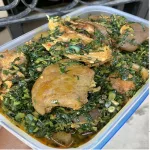



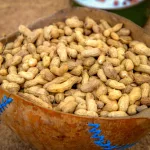
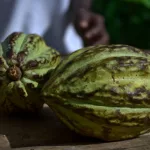
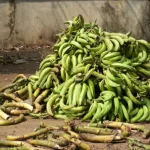
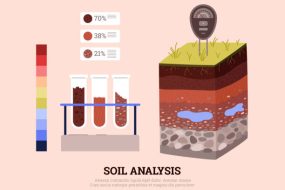
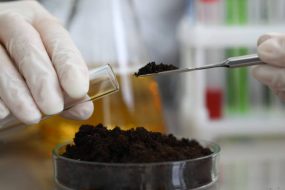
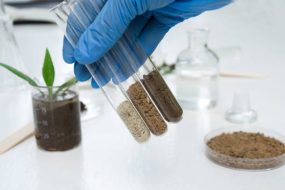
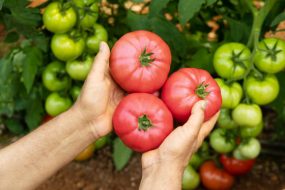
One reply on “Discover The Difference Between Basin And Drip Irrigation And Which One Is Right for Your Farm”
[…] Read, Also >>>>>> Discover The Difference Between Basin And Drip Irrigation And Which One Is Right for Your Farm […]